The World at His Feet
The rise of male classical dancers
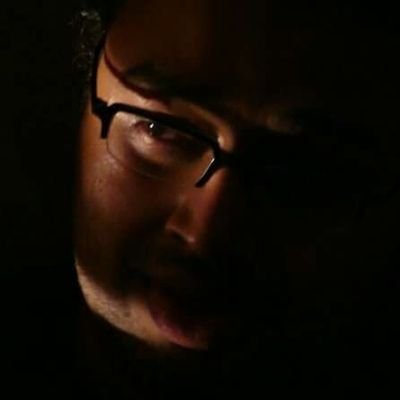 Veejay Sai
Veejay Sai
 Veejay Sai
|
04 Jan, 2017
Veejay Sai
|
04 Jan, 2017
/wp-content/uploads/2017/01/Theworld1_0.jpg)
INDIAN CLASSICAL DANCE has long been stereotyped as an ‘all women’ zone. Though the gods of Hindu iconography often dance—Shiva is worshipped as ‘Nataraja’ and Krishna is hailed as ‘Natawara’—over the past few centuries, across architecture, sculpture and poetry, it has been women who are the subject of anything related to dance. One of the many reasons for this stereotype is the temple cultures and traditions that patronised female practitioners of the art form. The community of dancers— who later came to be known as ‘Devadasis’— never had any men performing. The male professionals they hired were musicians, percussionists, dance directors and conductors and even decision- makers who benefitted from the monies earned, but never dancers. This slowly changed after the 1850s. Once theatre companies began to flourish, more men were accepted as performers. They acted. They didn’t dance as that was still considered taboo. The dancing was left to women. Moreover, the classical dance world wasn’t as welcoming to male dancers as it was to women. One of the many reasons for this was that gurus then were mostly males and society did not permit girls to learn freely. The other reason might be the very content of most dance forms—it was meant for women rather than men.
It wasn’t always like that. There were several traditional communities which were all-male when it came to dance: the little boys who are initiated into the highly acrobatic form of Gotipua in the villages of Odisha, the Brahmin families that rejuvenated the dance-drama format of Kuchipudi in the coastal Andhra region, the vibrant Yakshagana tradition of coastal Karnataka, Theru Koothu in Tamil Nadu and so forth. Even in Bharatanatyam, the teachers and dance conductors (or Nattuvanars, as they are called), were always men.
At the turn of the 19th century, men began taking to dancing in public. Even as the very dance forms themselves migrated from temples to royal courts, and further from courts to public spaces, men began playing a stronger role. Some of the earliest names one can think of are Ram Gopal from Bangalore, Uday Shankar from Calcutta who went abroad to become a painter and returned as a dancer, among others. A whole generation of male dancers copied these two stars. From headgear to costume to choreography, several like US Krishna Rao of Bangalore, Bhaskar Roy Chowdhary and others sustained those trends well into the 1950s. However, those men who managed to pull off solo careers as full-time classical dancers were few and far between. Many male dancers were reduced to either pairing women in group works or partnering wives, so most did not stand alone or stand up individually. The list of dance- couples is long. But Indian classical dance continues to be a solo experience. The best dancers were and are soloists.
Post liberalisation, television in India grew multifold. Opportunities grew for the world of dance and music with public service broadcasting. Doordarshan’s National Programme of Dance, usually slotted at an unearthly hour, still had the odd male dancer on screen. Through the 1970s and 1980s, there was a slow growth of male soloists. In Odissi, one saw legends like Kelucharan Mahapatra and Debaprasad Das. Birju Maharaj, who came from a family of dancers, found it an easier path to tread. The Kerala Kalamandalam produced greats like Kalamandalam Gopi and Sadanam Balakrishnan.
In a world where success is measured on unequal grounds, these dancers, like several other young professionals who have dared to make full careers in performing arts, are judged harshly
There have been several big schools of dance like Rukmini Devi Arundale’s Kalakshetra in Chennai, Kathak Kendra in Delhi and others. Most of these churn out batches of dancers, but don’t really train them for a solo-performing career. In over seven decades of Kalakshetra’s existence, it is difficult to list even 10 male soloists of international worth and merit. One of the many reasons for this is the lack of one-on-one instruction in an earlier gurukul style, where a teacher concentrates on one student and monitors his growth in the art form. Kalakshetra’s classroom method has produced groups over the decades. The few soloists on the block are exceptional cases. One cannot deny the presence of veterans like Guru CV Chandrasekhar, the world’s oldest Bharatanatyam soloist who actively performs well into his eighties, and several couple dancers like Dhananjayans, or later batches of students like Navtej Johar who eventually ventured into contemporary dance. In the recent past, the one name that stands out as a promising soloist is Christopher Gurusamy. Having graduated from Kalakshetra, Christopher trained extensively under Guru Leela Samson for several years before venturing out as a soloist. This once again followed the norms of the guru-shishya tradition where the student is taught one on one by the teacher. Christopher, half-Scottish and half-Tamil, is one of the finest male dancers of his style in his generation. After years of unsuccessful batches, one can see a glimmer of hope in Christopher’s career as a Bharatanatyam soloist.
Among today’s generation of male dancers, we have some of the best names coming from totally different and varied backgrounds. Bengaluru’s Parshwanath Upadhye is widely rated as India’s best male soloist when it comes to Bharatanatyam. Hailing from a Jain community in Karnataka, Parshwanath has a black belt in Karate and is a state- level swimming champion who holds a Master’s degree in literature. One can see that physical fitness translate into the way he flexes his body to the demanding needs of Bharatanatyam. The other extreme of this is Mithun Shyam, a Malayalee boy who trained under a single guru in Bengaluru for the last 20 years and then ventured out as a soloist only recently.
The blinkered Sabha culture in Chennai that prioritises Tamil Brahmin boys over others has little space for such ambition. But they are invited all over the country and abroad. Parshwanath has danced in several countries. In Mumbai, where distractions are easy with television and cinema, one boy consistently chasing his passion as a Bharatanatyam soloist is Pavitra Krishna Bhat. For a Kannadiga settled in Mumbai, the challenges are multifold when it comes to affiliating one’s cultural context and performing a dance form that really doesn’t belong there. While Bharatanatyam is still the most popular among Indian classical dance forms, wider acceptance of these male soloists has been slow. Sabhas and organisers in Chennai take time to be convinced that male dancers can fill halls or be box-office hits. But none of that discourages these boys from pursuing what they believe in. Unlike their seniors in the field, they live in more techno-savvy times. For example, Parshwanath’s Facebook fan page has over 10,000 likes, comments and visitors.
In the insular world of Kathak, where male students are barely encouraged to take up solo careers, a few boys have slowly managed to make a mark
In Odissi, a dance form known more for its lyrical beauty, one is used to watching women perform it. The dance form as such also lacks the aggressive energy that one expects from male dancers. In the recent past, the one name that stands out as a star is Rahul Acharya. Hailing from a family of traditional priests, he earned fame early. Honoured with the Ustad Bismillah Khan Yuva Puraskar from the Central Sangeet Natak Akademi, Rahul has been consistent in performing solo Odissi acts with great finesse. In the Northeast that is rich with several cultural forms, Manipuri dance has been the most prominent. Once again, soloists , especially male dancers, have been few in the last few decades. In the recent past, the one name that stands out is of the young and talented Sinam Basu. Originally from an impoverished background, Sinam grew to be a soloist through sheer hard work and dedication. Currently pursuing his post doctoral studies in Santiniketan, Sinam has also been awarded the Central Sangeet Natak Akademi’s national award.
In the insular world of Kathak, where male students are barely encouraged to take up solo careers for various reasons, very few have managed to succeed. In the past, one had names like Pandit Durga Lal of Jaipur Gharana who dazzled with their virtuosity and mastery over rhythm. Today’s generation has no such equivalent. But a few boys have slowly managed to make a mark. Sourav Roy from Kolkata is one promising name. Kolkata isn’t really a city where any classical dance form has thrived the way fine arts and classical music have. The city hasn’t produced any big names in the last several decades. Sourav is a graduate in Commerce from the Rabindra Bharati University and has a Master’s in Kathak. His teacher Malabika Mitra trained in both Lucknow and Jaipur styles before making her own presentation of the dance form. Sourav follows what he has been taught. His performances mix elements of dance from both these gharanas. Over the years, he has been steadily growing as one of the best Kathak soloists Kolkata has ever produced. Though Kathak has a stronger presence in the Mumbai-Pune belt, very few soloists of any merit have emerged. Hailing from a conservative Muslim family in Pune is Minhaz Khan. Having trained under gurus like Pandit Rajendra Gangani of the Jaipur Gharana in Delhi, and having toured India extensively as a member of Aditi Mangaldas’ dance company, Minhaz is a promising soloist in the art form. If given better opportunities and support, dancers like him could go quite far.
Down south in the highly entertaining solo dance-drama format of Ottan Thullal, Suresh Kaliyath is a star. A mechanical engineer by profession and an artiste by choice, Suresh is trained in Thullal, Bharatanatyam, Kuchipudi, Parichamuttukali and the intricate art of playing the mizhavu. He has also been an active member of several renowned theatre groups like Adi Shakti from Puducherry. He is one of the few professional Thullal artistes we have in this country with high expertise and flair. In recent years, he has not only made the art form popular among urban audiences but has helped revive it with a new energy. From Kerala Kalamandalam, among today’s generation of young stars is Kalamandalam Aravind. Both Suresh and Aravind are cut off from Delhi’s networks of patronage. Busy minding their art in remote Kerala, they have come up the hard way without much support from the state.
Unlike earlier times, the current crop of dancers has to deal with several issues. While technology has enabled better quality recording facilities, costs have also risen. Shows that come via corporate social responsibility initiatives of MNCs are scarce. When they do get to perform, they do it for the love of performing and showcasing their art and not for the meagre remuneration. All these boys are capable of taking up more lucrative professions. After all, their parents have made sure they also have a regular career-oriented education. But it is the sheer passion for dance that keeps them going. Ask any of these boys, and they say they can only think dance.
In a world where success is measured on unequal grounds, these dancers, like several other young professionals who have dared to make full careers in performing arts, are judged harshly. They are pitted against their peers in sciences or sports where the parameters of judging growth and success are keenly contested. But the courage and determination of these young male dancers to keep going, given the rigorous demands of classical dance, is admirable. Though neglected and even sidelined by most dance patrons, the male in classical dance has been on a steady rise.
The new male classical dancer is here to stay, just like the male chef who has virtually taken over the food and beverage industry. The new dancer belong to the savvy multi-tasking generation and can confidently manage his own careers and take professional risks as well. He knows his capabilities and doesn’t hesitate while speaking his mind. He is open to healthy criticism and ready to put in all the needed hard work and confidence in his art.
Dancers like Parshwanath, Pavitra, Rahul and Suresh have already become new-age role models for many more to take up classical dance as a full-time profession. In time, they are likely to become successful ambassadors of their dance form and tradition.

/wp-content/uploads/2025/01/Cover_Kumbh.jpg)





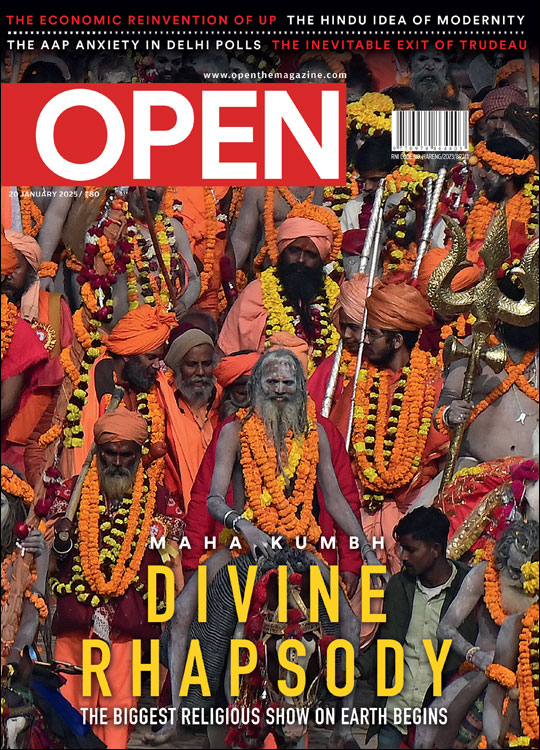


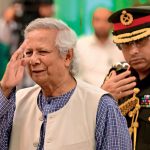
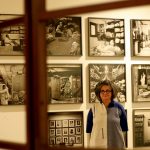

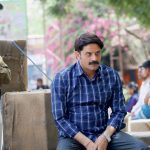

More Columns
What does the launch of a new political party with radical background mean for Punjab? Rahul Pandita
5 Proven Tips To Manage Pre-Diabetes Naturally Dr. Kriti Soni
Keeping Bangladesh at Bay Siddharth Singh